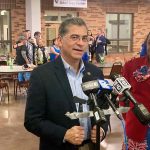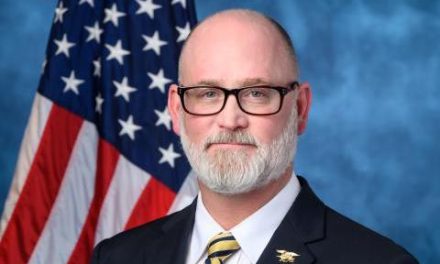
Wisconsin working: Progress in childhood lead poisoning prevention and detection
The Wisconsin Department of Health Services (DHS) and the Department of Natural Resources (DNR) announced today that they are pleased with the progress the state is making in preventing childhood lead poisoning, but both agencies acknowledge that there is work left to do.
“We are moving closer to our goal of no child ever being exposed to the damage lead can do to their bodies and minds, thanks in part to efforts made by Governor Scott Walker, our local and tribal health departments, and our other partners,” said State Health Officer Karen McKeown.
A report published by DHS in September showed that in 2016, there were more than 4,300 Wisconsin children who were tested and found to have too much lead in their bodies. Over the last 20 years, lead poisoning cases were identified in every county in the state.
As part of the 2017-2019 biennial budget, Governor Walker signed into law a measure that changes the amount of lead considered harmful to a child in accordance to guidance from the Centers for Disease Control and Prevention (CDC). This change allows for the identification of more children exposed to lead, which in turn allows for faster intervention to remove the source of lead from the child’s environment. In Wisconsin, a greater proportion of children under age 6 are tested, compared to the national average, however, Wisconsin also has a greater proportion of older homes, which are more likely to pose lead hazards. Consequently, Wisconsin identifies a greater proportion of children under age 6 with lead exposure than the national average.
DHS and its local partners are also working closely with child care providers to encourage parents to get their children tested for lead, and to identify and remove lead hazards in their child care facilities. DHS recommends all kids who live or spend time in older homes or buildings be tested for lead exposure.
While lead paint continues to be the most common source of lead exposure to children, states are also working to reduce lead exposure in drinking water systems. The Wisconsin Department of Natural Resources recently provided lead line service replacement funding for communities, encourages testing of private water supplies and provides tips on ways to reduce lead exposure in drinking water. You can find out more information by visiting the DNR’s website and searching keywords “drinking water.”
October 22 through October 28 is Childhood Lead Poisoning Prevention Week across the nation. Experts on lead and lead poisoning from DHS and DNR are hosting a Facebook Roundtable on Thursday, November 2 at 12:00 p.m. to answer frequently asked questions about sources of lead and preventing lead exposure.





